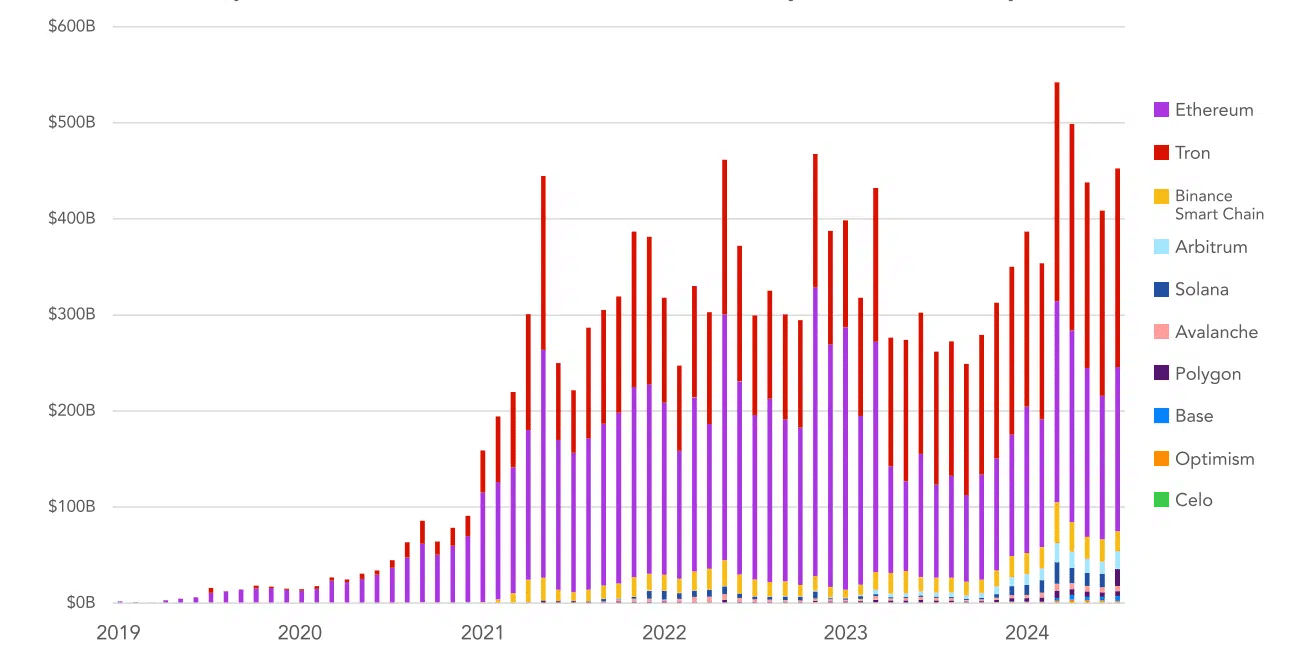Data gathered by CoinGecko reveals that Ethereum and TRON dominate the stablecoin market, holding a combined $144.4 billion, or 83.9%, of all stablecoins.
Blockchain networks Ethereum and TRON continue to dominate the stablecoin market, holding a combined share of nearly 84%, valued at $144.4 billion as of September.
According to estimates from crypto price aggregator CoinGecko, Ethereum leads with $84.6 billion, or 49.1% of the total stablecoin supply, while TRON follows closely with $59.8 billion, accounting for 34.8% of the market.

Despite Ethereum’s stablecoin supply increasing by $17.2 billion in 2024, its market share declined due to the collapse of Terra’s stablecoin UST, the onset of the bear market, and the proliferation of layer 2 solutions during that time, the report reads.
TRON’s dominance stems from the strong demand for Tether (USDT), which constitutes 98.3% of the stablecoins on the network. However, its market share fell from 37.9% earlier in the year despite a 21.6% supply increase.
Stablecoins reshape global finance landscape
BNB Chain (formerly BNB Smart Chain), ranked third, has seen its share drop to 2.9% following regulatory challenges around Binance USD (BUSD), which reduced the chain’s stablecoin supply by 61% since May 2022. Meanwhile, emerging blockchains like Coinbase’s Base, which grew its stablecoin supply by 1,941.5% in 2024, are gaining ground, indicating a diversifying stablecoin landscape.

Stablecoins are playing an increasingly central role in global finance, having settled $3.7 trillion in transactions in 2023 and projected to reach $5.28 trillion by the end of 2024. As crypto.news reported earlier, data gathered by Castle Island Ventures and Brevan Howard Digital revealed growing usage of stablecoins beyond exchange settlement, particularly in emerging markets where they are being used for savings, currency conversion, and yield generation.
Having surveyed over 2,540 crypto users across Nigeria, Indonesia, Turkey, Brazil, and India, researchers found that while trading crypto or non-fungible tokens remains the most popular use for stablecoins, non-crypto purposes are not far behind.